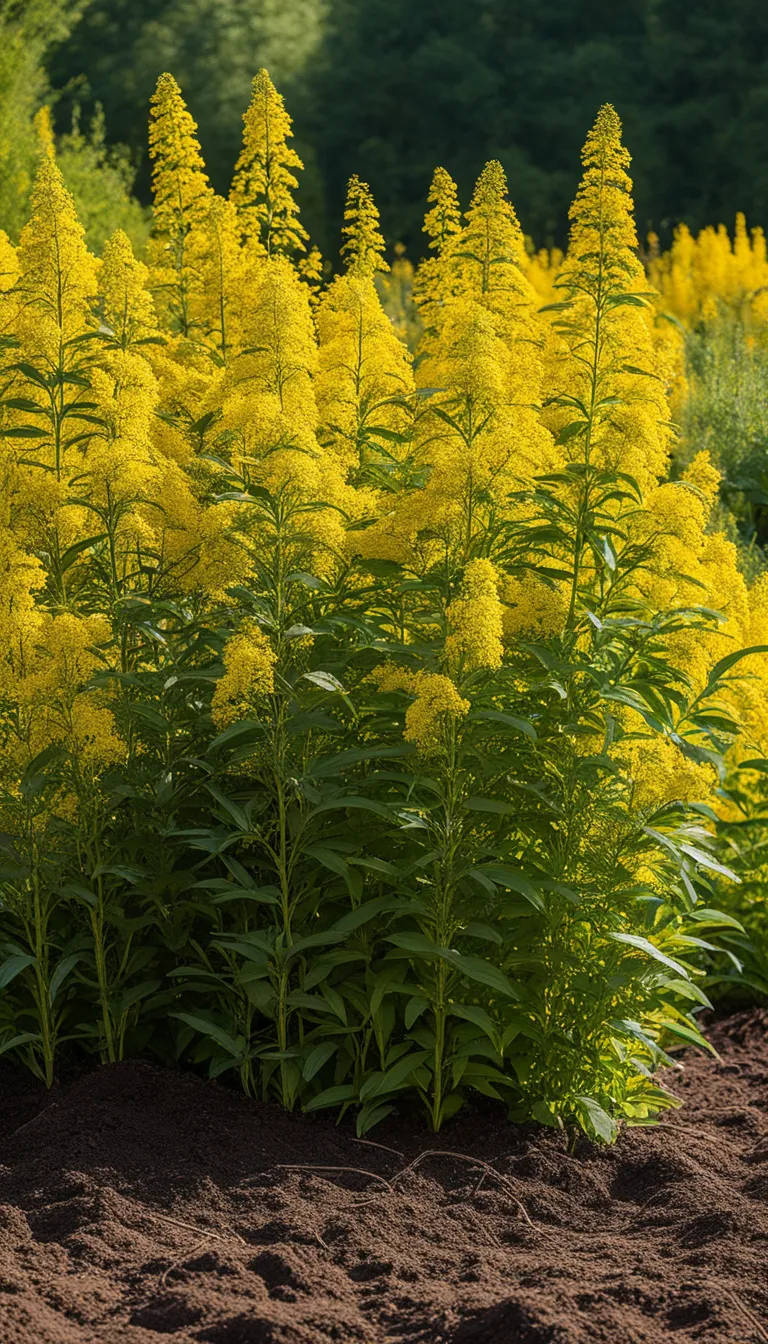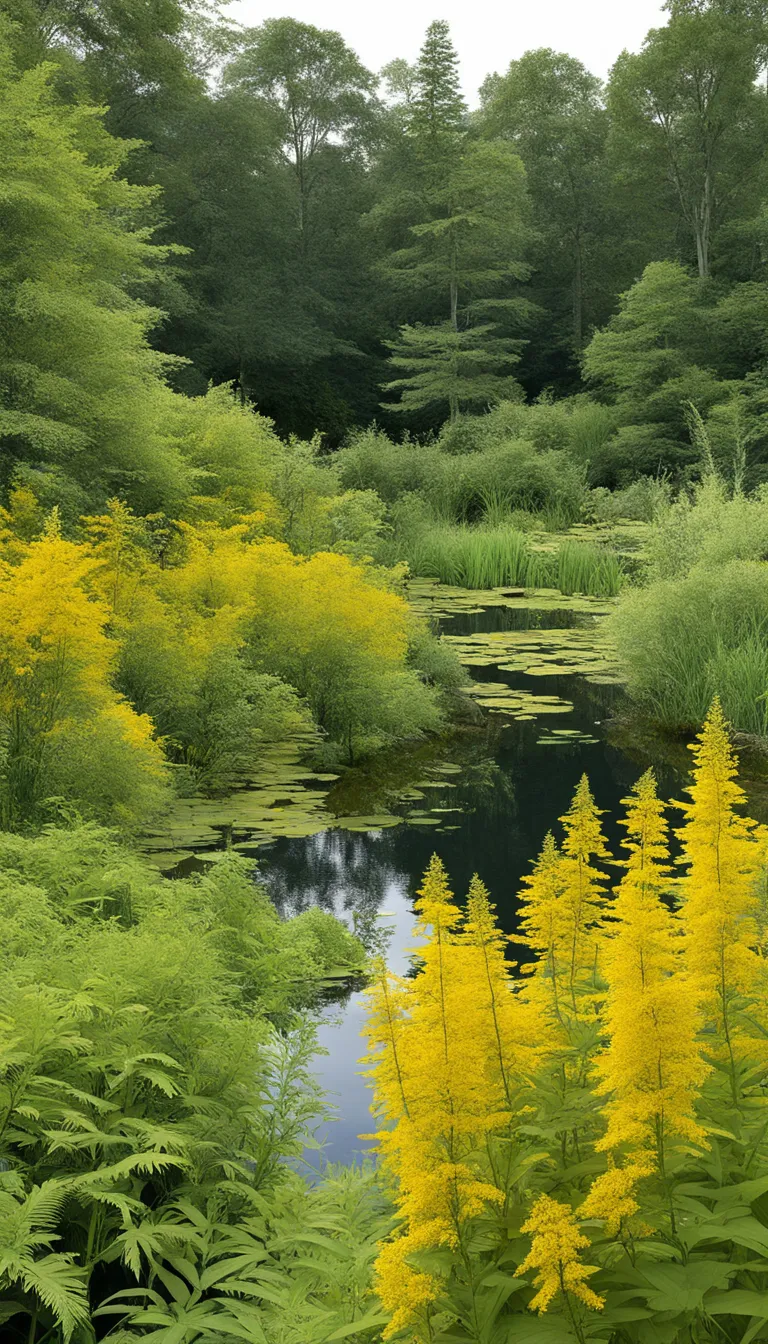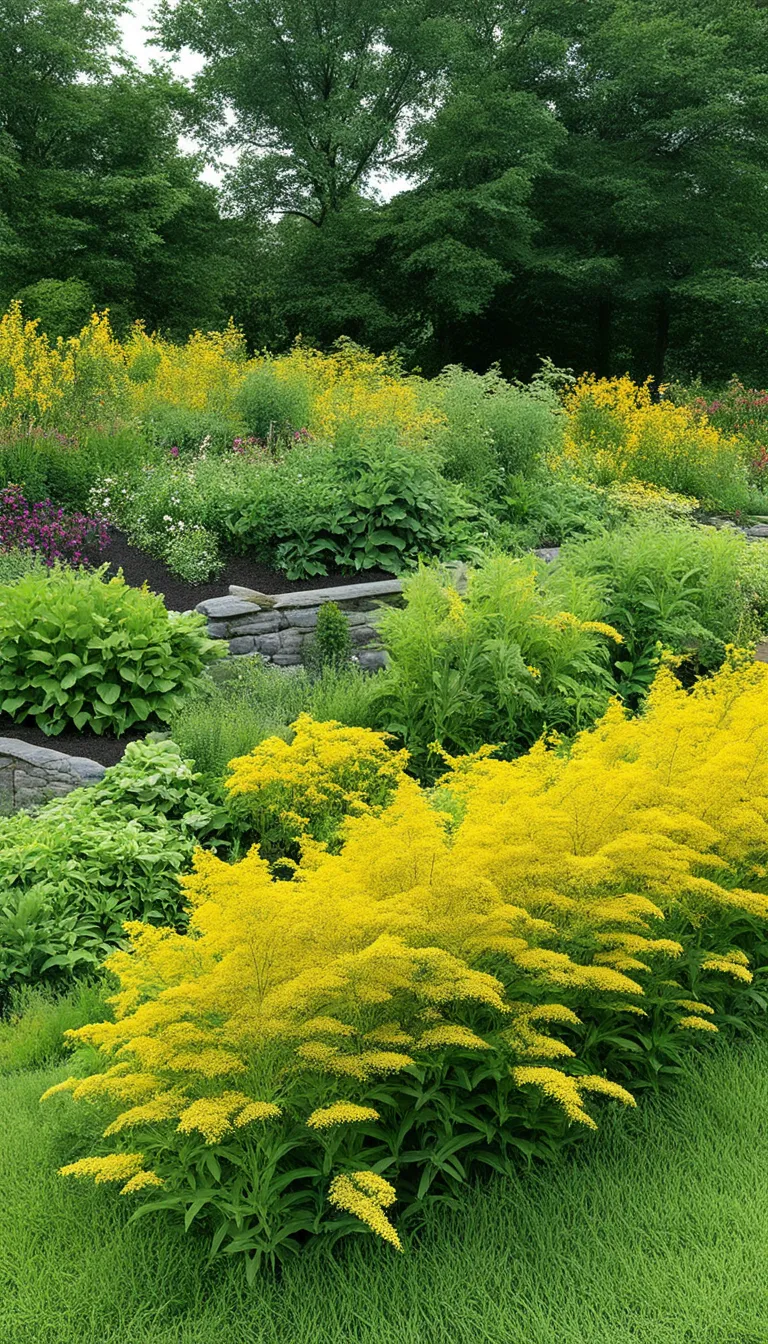Goldenrod, a vibrant plant that truly captures the imagination, isn’t just a feast for the eyes with its bright yellow plumes; it’s a powerhouse of utility. Often mistaken as a mere wildflower, goldenrod is a symbol of abundance in the garden, attracting a symphony of pollinators with its nectar-rich blossoms. But did you know, beyond its beauty, it’s a plant with a purpose?
Have you ever wondered what makes goldenrod a gardener’s delight? It’s hardy, it’s resilient, and it brings a burst of sunshine to any landscape. But there’s more to it than meets the eye. Its ecological benefits are vast, serving as a crucial food source for bees, butterflies, and other beneficial insects. And if you’re into herbal remedies, goldenrod might just be your new best friend with its array of medicinal properties.
Caring for goldenrod is a breeze. This unassuming hero of the plant world thrives in full sunlight and can adapt to a variety of soil conditions. It’s the kind of plant that asks for little but gives so much in return. Are you ready to add a splash of golden to your garden and watch as it transforms into a hub of buzzing activity?
But wait, there’s more! Goldenrod comes in various shapes and sizes. From the tall and stately Solidago canadensis to the more compact Solidago sphacelata, there’s a goldenrod for every garden design. Imagine a landscape painted with different hues of yellow, each variety bringing its own unique touch to the tableau. It’s not just a plant; it’s a paintbrush in the hands of a gardener.

What is Goldenrod?
Goldenrod, known scientifically as Solidago, is a perennial wildflower that paints landscapes with its striking yellow hues. Far from just a pretty face, goldenrod plays a crucial role in ecosystems by supporting biodiversity. It’s a pollinator magnet, attracting bees, butterflies, and other beneficial insects. Gardeners often praise it for its low-maintenance nature and its ability to thrive in a variety of conditions.
Did you know that goldenrod is often mistaken for causing hay fever? It’s a common misconception! In reality, its pollen is too heavy to be carried by the wind, making it unlikely to irritate allergies. Instead, ragweed, which blooms around the same time, is often the culprit. So, don’t let this myth deter you from welcoming goldenrod into your garden!
Here’s a surprising fact: goldenrod has more than just aesthetic value. It has been used for its medicinal properties, believed to aid in healing wounds and reducing inflammation. Plus, with its robust explosion of color, goldenrod can bring a dynamic visual impact to any garden space, especially in the fall when other flowers begin to fade.
When considering adding goldenrod to your garden, it’s important to note the following:
- Goldenrod thrives in full sunlight but can tolerate partial shade.
- It prefers well-drained soil, but it’s adaptable to various soil types.
- There are over 100 species of goldenrod, each with its unique charm.
- Maintenance is minimal, making it a great choice for beginner gardeners.
Whether you’re a seasoned gardener or just starting out, goldenrod is a fantastic addition to any garden looking for a splash of color and a boon for local wildlife. Its surprising versatility and explosive autumnal bloom make it a plant that’s both beautiful and beneficial.

How to Care for Goldenrod?
Goldenrod, a beacon of vibrant yellow in any garden, is not just a feast for the eyes but also a magnet for beneficial pollinators. But how do you ensure that this hardy perennial thrives in your space? Let’s dive into the simple yet effective care tips that will guarantee your goldenrods are not only surviving but bursting with life!
First things first, sunlight is your golden ticket to goldenrod success. These plants are sun worshippers and require full exposure to keep their blooms bright and bountiful. Aim for at least 6 hours of direct sunlight a day. As for soil, well-drained ground with a neutral to slightly acidic pH is ideal. Goldenrod is pretty adaptable, but soggy soil? That’s a big no-no.
When it comes to watering, think moderation. Goldenrods are drought-tolerant once established, so overwatering can lead to root rot. A good rule of thumb is to water when the top inch of soil feels dry to the touch. And let’s not forget about fertilization—or, in this case, the lack thereof. These wildflowers are used to fending for themselves, so they typically don’t require additional nutrients. If your soil is exceptionally poor, a light touch of compost in the spring could do the trick.
Now, are you ready for some goldenrod variety in your garden? Here’s a quick list of care tips for these sun-loving beauties:
- Spacing: Give each plant about 12-18 inches of space to allow for ample air circulation and growth.
- Pests and Diseases: Luckily, goldenrods are resistant to most pests and diseases. Keep an eye out for rust or powdery mildew and treat it early if you spot any.
- Pruning: To encourage bushier growth and prevent self-seeding, you can deadhead spent flowers. In the fall, cut back the plants to help them conserve energy for the next blooming season.
Remember, patience is key. Goldenrod may take a year or two to establish fully, but once it does, it’s a low-maintenance explosion of color that’s sure to surprise and delight for years to come. So, why not add a touch of gold to your garden today?

What are the Goldenrod Varieties?
Goldenrod, or Solidago, is not just a single entity but a tapestry of varieties that can add an explosion of color and texture to any garden. Have you ever wondered how many faces this versatile plant can have? Let’s dive into the world of goldenrod and explore some of its most popular varieties.
First on our list is the Solidago canadensis, commonly known as Canada Goldenrod. It’s a robust variety that can reach towering heights and is known for its lush, golden plumes. Next, the Solidago speciosa, or Showy Goldenrod, lives up to its name with its bright and attractive blooms that are sure to catch the eye.
For those looking for something a bit more compact, Solidago rigida, the Stiff Goldenrod, offers a more controlled growth habit while still providing that signature sunny hue. And let’s not forget about Solidago nemoralis, the Gray Goldenrod, a species that brings a softer tone to the palette with its delicate, pale-yellow flowers.
Here’s a quick overview of some common goldenrod varieties:
- Canada Goldenrod (Solidago canadensis): Tall and lush, perfect for a backdrop.
- Showy Goldenrod (Solidago speciosa): Bright and eye-catching, ideal for ornamental use.
- Stiff Goldenrod (Solidago rigida): Compact and manageable, great for smaller spaces.
- Gray Goldenrod (Solidago nemoralis): Subtle and soft, excellent for a touch of elegance.
Each variety of goldenrod not only brings its own aesthetic appeal but also serves as an important food source for pollinators. With such diversity, there’s a goldenrod out there for every type of garden. So, why not add a burst of sunshine with these fabulous flowers? Remember, the right choice of goldenrod can make your garden a vibrant sanctuary for both the eyes and the ecosystem.





